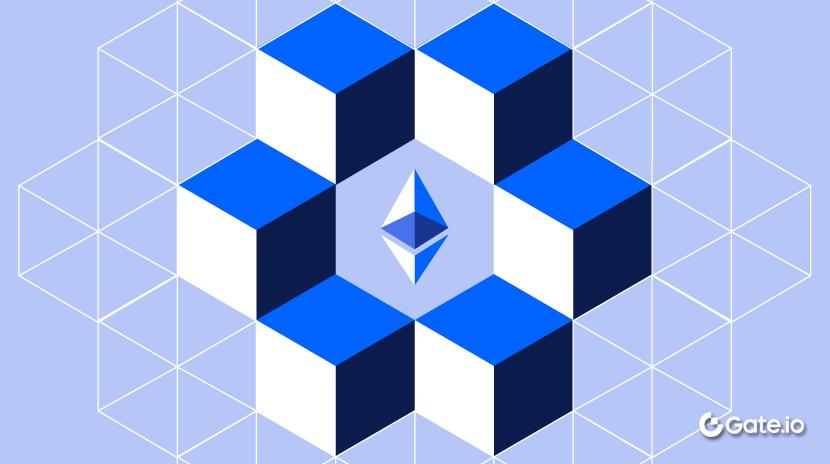إطار النوايا المفتوحة الجديد لإثيريوم
مقدمة
إن نظام الإيثيريوم يخضع لابتكار وتحول عميقين، وإطار Open Intents يقف كنقطة انفراج رئيسية في هذه العملية. إنه يهدف إلى تقدم نماذج معاملات عابرة للسلاسل من خلال التوحيد والتعميم.
بقيادة العديد من المؤسسات، بما في ذلك مؤسسة إثيريوم (EF)، Hyperlane، و Bootnode، تم تصميم هذا الإطار لتوفير تجربة مفتوحة وغير مصرح بها لمستخدمي إثيريوم. بفضل مجموعة الأدوات القابلة للتكوين لديها، يمكن لفرق التطوير تقليل التكاليف بشكل كبير وتقصير دورات التكرار، مما يسرع من عمليات الابتكار ونشر المنتج.
لقد حصلت إطارات النوايا المفتوحة بالفعل على دعم من شبكات الطبقة 2 الرئيسية مثل Arbitrum، Polygon، Optimism، ZKsync، و Scroll. إنه يعزز كفاءة عمليات السلسلة الجانبية، ويبسط سير عمل المطورين، ويتماشى مع رؤية إثيريوم على المدى الطويل لخفض الحواجز التقنية ودفع تبني أوسع.

المصدر: https://x.com/ethereumfndn/status/1892244647369433272
ما هو نموذج التداول القائم على النية؟
إطار Open Intents هو مجموعة أدوات معمارية مفتوحة المصدر مصممة لتبسيط وتسريع عملية تطوير ونشر البروتوكولات القائمة على النية. من خلال هذا الإطار، لم يعد المطورون بحاجة إلى بناء الأشياء من الصفر؛ بل يمكنهم الاستفادة من تجريدات معمارية متكاملة — مثل حلول المشاكل والعقود الذكية القابلة للتركيب — لتخصيص وإطلاق منتجات مبتكرة قائمة على النية بسرعة.
الخلفية: مواجهة تحدي تشتت السلاسل المتعددة
في السنوات الأخيرة، نمت نظام الإيثيريوم بسرعة مع تطور الشبكات من الطبقة الثانية (L2) مثل Arbitrum و Optimism، بالإضافة إلى البلوكشينات الناشئة. ومع ذلك، يواجه أيضًا تحدي تشتت السلاسل العديدة. غالبًا ما يواجه المستخدمون عمليات تشغيل عبر السلاسل المعقدة، وتكاليف مرتفعة، وتجارب متشتتة.
لمعالجة هذه المشكلة، ظهر آلية "النوايا". يحتاج المستخدمون فقط إلى إعلان أهدافهم (على سبيل المثال، "تبديل 100 دولار أمريكي على القاعدة مقابل 100 دولار أمريكي على أربيتروم"، بينما يتولى حلول المشكلة التعامل بشكل تلقائي مع الباقي، مما يقضي على الحاجة إلى التوجيه اليدوي عبر السلاسل.
ومع ذلك، فإن البروتوكولات التقليدية القائمة على النية تواجه عقبات تطويرية عالية، حيث يتطلب من المطورين بناء عقود ذكية ومحللين وطبقات تسوية من البداية، مما يؤدي إلى عمل متكرر. ولحل هذه المشكلة، تم إطلاق إطار النوايا المفتوحة من قبل مؤسسة إثيريوم بالتعاون مع Hyperlane و Bootnode وغيرهم، بهدف تبسيط التطوير من خلال نهج معماري ومفتوح المصدر.
على عكس النماذج التقليدية للتداول، يتطلب آلية النية فقط من المستخدمين الإعلان عن أهدافهم دون التعامل مع إعدادات الغاز أو تفاعلات العقود. يقوم النظام بتنفيذ المعاملات تلقائيًا، باستخدام عمليات خارج السلسلة لتبسيط العمليات عبر السلاسل، وتحسين الكفاءة، وخفض الحواجز التقنية، خصوصًا مع زيادة تشظي الشبكات من الطبقة 2.
الهدف الأساسي لإطار النوايا المفتوحة هو تقليل التعقيد التقني لعمليات تداول العملات المشفرة وتعزيز اعتماد النظام البيئي. وصرح هارت لامبور، المؤسس المشارك لشركة Risk Labs، بأن الإطار هو خطوة هامة نحو هذا الهدف، حيث يهدف إلى توفير معيار مشترك لتنفيذ النوايا.
على الرغم من التحديات مثل التعقيد التقني وإدارة السيولة وتنسيق النظام البيئي، يبسط تصميم Open Intents Framework الموديولار تطوير البنية التحتية، مما يوفر للمطورين الأدوات اللازمة لتخصيص ونشر بروتوكولات النية بسرعة.

المصدر:https://x.com/AcrossProtocol/status/1892300689717514291
الميزات الأساسية
فلسفة تصميم إطار النوايا المفتوحة (OIF) هي التعامل مع التعقيد التقني وتحديات إدارة السيولة في العمليات التقاطعية التقليدية من خلال البنية التحتية الوحدوية والمعايير المفتوحة. على وجه التحديد، يتكون الإطار من ثلاثة أدوات وحدوية رئيسية:
1. القياسي ERC-7683: إنشاء لغة النية العالمية
تنفذ OIF معيار ERC-7683، الذي يحدد واجهات موحدة لإنشاء النية وتنفيذها وتسويتها. لقد حظي هذا المعيار بدعم من قادة المجتمع، بما في ذلك فيتاليك بوتيرين. يوفر الإطار أيضًا رمز مرجعي مفتوح المصدر لـ ERC-7683 ويكمل عقود الشبكة الرئيسية لبروتوكول Across، مما يضمن أن يمكن للمطورين الابتكار بمرونة وفقًا لمعيار موحد.
المكونات الأساسية:
1. هيكل الطلب عبر السلسلة
يحدد تنسيق الطلبات عبر السلاسل الجانبية، مضمنًا التوافق عبر سلاسل الكتل المختلفة والمنصات. من خلال توحيد تكوين المعاملات عبر السلاسل الجانبية، يتيح ERC-7683 التشغيل المشترك بين السلاسل، ويوفر إطارًا موحدًا للمعاملات عبر السلاسل الجانبية.
2. واجهة ISettlementContract
يوحد معالجة التسوية. من خلال هذه الواجهة، يحدد ERC-7683 كيفية تسوية المعاملات عبر سلاسل مختلفة، ويدعم تنفيذ العمليات العبرية المرنة ويسمح بتدفقات المعاملات قابلة للتخصيص لتلبية احتياجات مختلف المنصات والمستخدمين.
3. آلية التنفيذ
يقدم آلية "الوفاء"، مما يسمح للمشاركين بتقديم خدمات (مثل تنفيذ الأوامر) داخل شبكة السلسلة الصليبية لتقليل التكاليف وتحسين الكفاءة. تحسن هذه الآلية معالجة المعاملات الصليبية، مما يجعل المعاملات أكثر كفاءة ويعزز تجربة المستخدم.

4. الموعد النهائي للتعبئة
يحدد الوقت الذي ينتهي فيه النية عبر وحدة X، وإذا لم تتم النية في الوقت المحدد، فسيصبح غير صالح تلقائيًا، مما يمنع الانتظارات الطويلة للمعاملات الفاشلة ويعزز الكفاءة والدقة.
5. نوع بيانات الطلب
يُستخدم تجزئة نوع EIP-712 لتحديد هيكل وتنسيق بيانات النية. يتيح هذا المعيار للمطورين والمنصات تعريف تنسيقات البيانات بوضوح لنقل السلسلة عبر السلاسل والتفسير، مما يضمن توافق البيانات وقابلية التشغيل بين السلاسل الكتلية.
6. بيانات الطلب
يتضمن معلمات رئيسية لعملية تحويل عبر السلاسل (مثل الرمز المميز، والمبلغ، والسلسلة، والمستلم) ويحدد النتيجة المتوقعة للصفقة. من خلال تحديد هذه المعلمات بوضوح، يمكن لجميع الأطراف المعنية فهم العمليات عبر السلاسل وتنفيذها بدقة.
مزايا:
تفاعل سلس عبر السلاسل
من خلال توحيد تعبير النية عبر السلاسل الصلبة، تقلل ERC-7683 من الحواجز التقنية لعمليات السلاسل الصلبة وتبسط العملية. يمكن للمستخدمين القيام بإجراءات مثل تبادل الرموز أو نقل NFT بين سلاسل صلبة مختلفة دون تكوينات معقدة، مما يعزز من ملاءمة العمليات عبر السلاسل الصلبة.
قدرات الحوكمة المحسّنة
يوفر ERC-7683 تبسيط عمليات الحكم عبر سلاسل الكتل، مما يجعله مناسبًا بشكل خاص للمنظمات اللامركزية الذاتية (DAOs). إنه يتيح لـ DAOs إدارة الحكم عبر منصات متعددة بشكل أكثر كفاءة، مما يزيد من المرونة والشفافية.

المصدر: https://metlabs.io/ar/erc-7683-كل-ما-تحتاج-معرفته-عن-المعيار-الجديد-عبر-السلسلة/
2. قابلية برمجة محلل الحل: تحسين تخطيط المسار وإدارة السيولة
تتميز OIF بحل TypeScript مدمج يدعم فهرسة عبر البروتوكولات، تقديم المعاملات، وإعادة توازن السيولة. يمكن للمطورين تخصيص منطق الحل بسرعة استنادًا إلى هذا الإطار.
على سبيل المثال، يعتمد بروتوكول Eco عليه كمحل حل رسمي لمسارات Eco، بينما يستفيد Everclear من وظيفة إعادة التوازن التلقائية لـ OIF لتقليل تكاليف إدارة السيولة.

مصدر: https://eco.com/
3. تجميع العقود الذكية القابلة للتعديل: التكيف المرن مع احتياجات المعاملات المختلفة
تأتي OIF مع مجموعة متنوعة من وحدات العقود الذكية الجاهزة، تتراوح بين تبادل طلب الحد الأساسي إلى آليات التسوية التي تدعم Hyperlane ISM. يمكن للمطورين دمج هذه الوحدات بحرية لتناسب احتياجاتهم. في المستقبل، يمكن دمج معايير مثل بروتوكول البث لـ Arbitrum وبرهان التخزين RRC-7755 كوحدات، مما يمكن تمكين التطور المتنوع لطبقة تسوية النية.

المصدر: https://docs.hyperlane.xyz/docs/protocol/ISM/modular-security
تقلل هذه الأدوات من العبء المتكرر على المطورين، محولة وظيفة النية من أداة متكاملة إلى "كتلة ليغو" قابلة للتركيب، والتي تضع الأساس التقني للتعاون عبر السلاسل. حاليًا، يتم نشر قاعدة الكود OIF بشكل مفتوح على GitHub ومن المخطط أن يتم فحصها في الربع الأول من عام 2025، مما يعزز مصداقيتها واعتمادها بشكل أكبر.
تطوير النظام البيئي
رؤية OIF ليست فقط توفير الأدوات التقنية ولكن أيضًا دفع تطور النظام البيئي بأكمله، وتعزيز التفاعلات الأوسع عبر السلاسل الجانبية.
1. تعاون مفتوح لشبكات الحلول
تخطط منصات مثل خالاني لربط حلول اللامركزية في شبكة مشتركة، بينما يقوم بروتوكول الكومباكت التابع ليونيسواب باستكشاف مزيج النية وقفل الموارد. يمكن تكامل هذه الابتكارات بسرعة من خلال OIF، لتشكيل حلا يمتد عبر جميع السلاسل.

المصدر: https://x.com/Uniswap/status/1892309962333831290
2. تجربة التنوع في طبقة التسوية
يمكن للمطورين اختيار وحدات التسوية المختلفة، مثل جامع الهاشي الوحيد، وطبقة التأكيد الإسبريسو، أو حل التشغيل المتقابل الأصلي لـ Optimism، للعثور على التوازن الأمثل بين الأمان والكفاءة.

المصدر: https://superfest.optimism.io/superchain
3. قوالب واجهة المستخدم قابلة للتخصيص
لتبسيط تطوير الواجهة الأمامية ، يقدم إطار العمل قوالب واجهة مستخدم مسبقة الصنع ، مما يسمح للمطورين بتخطي واجهات البناء من البداية واستخدام هذه القوالب كأساس. القوالب قابلة للتخصيص بدرجة كبيرة ، مما يمكن فرق التطوير من تعديلها وتعديلها وفقا لاحتياجات محددة.
على سبيل المثال، يتيح قالب Hyperlane Warp UI للفرق دمج وظائف السلسلة الصليبية بسهولة، مما يوفر كمية كبيرة من وقت تطوير واجهة المستخدم. استنادًا إلى هذه التجربة، توفر OIF أيضًا قوالب جاهزة لمساعدة المطورين على إطلاق مشاريعهم بسرعة.

المصدر: https://hyperlane-warp-template.vercel.app/
فلسفة تصميم OIF ليست لفرض مسار تقني موحد، بل لخفض تكاليف التعاون من خلال واجهات موحدة، مما يتيح للمطورين التركيز على الابتكار المتميز. كما هو مذكور في بيانها: "إذا بنينا معًا، ننجح معًا."

المصدر: https://x.com/EspressoSys/status/1892313446458544556
مشاريع ذات صلة
تركز جميع هذه المشاريع المتعلقة بإطار Open Intents Framework (OIF) على آلية "النية"، بهدف تبسيط تعقيد المعاملات العابرة للسلسلة وعمليات العقد الذكي، وتحسين تجربة المستخدم، ودفع تطوير النظام البيئي للعملات المشفرة.
باعتباره البنية الأساسية، يسهل OIF التكامل بين مشاريع مختلفة من خلال توفير واجهات موحدة، مثل بروتوكول Across، و Chainlink CCIP، و Hyperlane، التي تحسن نقل الأصول والاتصال عبر السلاسل من خلال OIF. تعزز مشاريع مثل Uniswap X، و Cowswap، و SUAVE تجربة التداول بشكل أفضل من خلال تحسين تطابق المعاملات وكفاءة التنفيذ بمساعدة OIF.
وفي الوقت نفسه، تقوم مشاريع مثل محرك النية البيئية Arbitrum ومحفظة النية IntentWallet بتبسيط تفاعل المستخدمين وتنفيذ العقود الذكية، مما يوفر تجربة تداول سلسة. بصفة عامة، يلعب OIF دورًا حاسمًا كأداة معمارية في تعزيز التكامل النظامي بين السلاسل، وخفض الحواجز التقنية، وتحسين كفاءة المعاملات.

المصدر: https://www.openintents.xyz/

هل لا يزال L2 بحاجة إلى توسيع؟
تهدف مقدمة إطار Open Intents Framework (OIF) إلى تعزيز تجربة المستخدم عبر السلسلة الجانبية، ودفع تكامل السيولة، وتقليل التكاليف داخل نظام الإيثيريوم L2.
ومع ذلك، على الرغم من أن إطار OIF يضيف دفعة جديدة إلى النظام البيئي L2، إلا أن الطلب على توسيع Ethereum L2 ما زال قائماً. مع زيادة النشاط في L2، تتزايد المنافسة على رسوم الكتل ETH وتصبح العقبات في قدرات توسيع L2 أكثر وضوحاً.
على الرغم من أن آلية ETH Blob توفر دعمًا للتوسيع، في الممارسة، مع زيادة نشاط نظام الإيثيريوم، تميل رسوم الكتلة إلى رفع تكاليف المعاملات، مما يؤدي إلى تقليل كفاءة المعاملات على منصات L2. تشمل نقاط الضعف التي تواجه نظام الإيثيريوم L2 منافسة الرسوم وعدم كفاية مساحة التخزين، خاصة على منصات L2 الرئيسية مثل Base، حيث وصلت مساحة الكتلة تقريبًا إلى 100% من الاستخدام.
لمعالجة هذه المشاكل، أصبح توافق L2s طريقًا حاسمًا للتخفيف من أزمة L2. يمكن أن يحل تشتت السيولة، ويخفف من ضغط التخزين، ويوفر دعمًا أفضل لتحويل الأصول بين منصات L2.

المصدر: https://dune.com/hildobby/blobs
تاريخ توسيع إثيريوم
تطورت قدرة توسيع إيثيريوم من التوسيع خارج السلسلة (مثل قنوات الحالة وبلازما) إلى الهيمنة الطبقية (Rollup)، والآن إلى التعاون متعدد السلاسل والموجه بالنية. أصبح Rollup التكنولوجيا الأساسية التي تدعم التوسع القدرات والأداء بينما يتحول خطة التجزئة تدريجياً إلى دور ثانوي.
في المراحل الأولية، كان التركيز على اللامركزية، بينما تمحورت المرحلة الوسطى حول تحسين الأداء (الإنتاجية والتكلفة). أما المرحلة اللاحقة فقد منحت أهمية أكبر لتجربة المستخدم والتوافق. على الرغم من ذلك، تظل توافر البيانات والأمان عائقين حرجين في عملية التوسيع، مع توقع أن تكون تقنية Danksharding وتكنولوجيا ZK مفتاحًا للانفتاحات المستقبلية.
مع تطور النظام البيئي، انتقل إثيريوم من سلسلة رئيسية واحدة إلى شبكة "Rollup-centric"، حيث أصبحت L2 تدريجيًا المنصة الرئيسية للتطبيقات، بينما تركز الشبكة الرئيسية على التسوية والأمان. قد أدى التحسين المستمر لأدوات المطورين، مثل OIF و Superchain، إلى تقليل تكاليف البناء بشكل كبير ودفع المزيد من الابتكارات.

الرؤية المستقبلية
يعالج مجتمع Ethereum التحدي الأساسي لعصر السلاسل المتعددة - كيفية جعل وجود السلاسل شفافا للمستخدمين - من خلال التعاون المفتوح. تحقيقا لهذه الغاية ، أطلقت Arbitrum محركا عالميا للنوايا ، وجربت Base معيار RRC-7755 ، ويقدم إطار النوايا المفتوحة (OIF) مجموعة أدوات معيارية مفتوحة المصدر. لا يهدف التصميم الأساسي ل OIF إلى تحديد مسار تقني واحد ولكنه يقلل من تكاليف التعاون من خلال واجهات موحدة ، مما يسمح للمطورين بالتركيز على الابتكار والدعوة إلى فكرة "إذا بنينا معا ، فزنا معا".
حاليًا، يتم توفير رمز OIF بصورة مفتوحة المصدر على GitHub، ومن المتوقع أن يتم الانتهاء من تدقيق الأمان في الربع الأول من عام 2025. يمكن للمطورين الانضمام إلى هذه التجربة مفتوحة المصدر لاستكشاف منطقيات الطلب الجديدة، مثل المزادات الهولندية عبر السلاسل، وتجربة حلول إدارة السيولة، أو إضافة وظائف النية إلى البروتوكولات الحالية. يمكنهم أيضًا العمل جنبًا إلى جنب مع أكثر من 30 فريقًا بيئيًا لدفع مستقبل سلس لـ إثيريوم.
مع تعزيز إطار Open Intents، ستنخفض المعوقات التقنية أمام المعاملات العابرة للسلسلة بشكل أكبر، وستصبح تجربة المستخدم العابرة للسلسلة أكثر سلاسة. وبشكل خاص مع توسيع شبكات الطبقة 2، يضفي OIF حيوية جديدة على النظام البيئي لإثيريوم ويضع الأساس لتعميم المعاملات العابرة للسلسلة وتكامل النظام البيئي. يُظهر التعاون بين مؤسسة إثيريوم وHyperlane وBootnode الإمكانات القوية للتعاون المفتوح، ويوفر إطلاق OIF رؤى هامة للابتكار التكنولوجي في مجال سلسلة الكتل في المستقبل. من خلال الواجهات الموحدة والتصميم القابل للتوسيع والتعاون المجتمعي، سيقوم OIF بلعب دور رئيسي في عالم السلاسل المتعددة في المستقبل.

المصدر: https://github.com/Uniswap/the-compact
التحديات والمخاطر
بينما يقدم إطار Open Intents Framework (OIF) حلول مبتكرة للمعاملات العابرة للسلاسل ونظام الإيثيريوم، إلا أن تنفيذه وتعزيزه ما زالا يواجهان عدة تحديات:
1. التعقيد التقني: ينطوي التصميم الأساسي لـ OIF على عمليات متعددة السلاسل وتوحيد المعاملات عبر السلاسل. يجب على المطورين أن يتقنوا الأطر الجديدة والواجهات، مما قد يشكل حواجز تقنية معينة. بالإضافة إلى ذلك، يتطلب التصميم القابل للتوسيع من المطورين أن يمتلكوا خبرة كافية في تخصيص ونشر بروتوكولات النية.
2. المخاطر التقنية: لم يتم تحديد بالكامل سطح الهجوم لبروتوكولات السلسلة النقدية العابرة القائمة على الوحدات (على سبيل المثال، تقنية Hyperlane ISM)، وقد تحتوي افتراضات أمانها على ثغرات. النقاط الضعيفة في المعيار ERC-7683 عرضة للهجمات من قبل مهاجمي MEV، الذين يمكنهم تحقيق ربح من خلال إعادة ترتيب أو إدراج المعاملات، مما قد يؤدي بالتالي إلى تحيز المعاملة أو الخسائر المالية.
يُوصَى بِأَنْ يُتَمَّ إِدْخَال نُمَاذِج شَجَرَة الهَجُمَات لَتَحْلِيل بِشَكْل مُنْتَظِم الْمَخَاطَر الْمَحْتَمَلَة لِـ Hyperlane ISM و ERC-7683. لِتَعْزِيز الأَمَان، يَجِب تَحْدِيد الْعُقُد الْحَرِجَة الْمُعَرَضَة لِلاِخْتِرَاق الْمَنْفَعَة الْمَالِيَّة لِلْمُؤَسَّسَة وَوَضْعُ عَلَامَات عَلَيْهَا.
3.كفاءة السيولة والتنفيذ: إدارة السيولة للمعاملات العابرة للسلاسل هي تحدي معقد. بينما يبسط OIF العمليات العابرة للسلاسل، إلا أن إدارة السيولة بشكل فعال بين سلاسل مختلفة لضمان سلاسة المعاملات تظل صعوبة تقنية.
إذا كانت السيولة غير كافية، قد يحدث انزلاق السعر أو فشل المعاملة. علاوة على ذلك، قد تقدم آليات تطابق النية المعقدة تأخيرات إضافية، مما يؤثر على تجربة المستخدم.
4. التعاون في النظام البيئي والتوحيد: يعتمد OIF على التعاون بين فرق النظام البيئي المتعددة. تعزيز التعاون الوثيق بين المطورين وفرق المشروع ومشاركي النظام البيئي، مع ضمان أن جميع أصحاب المصلحة يتبعون واجهة موحدة موحدة، هو تحدي آخر. قد تكون لدى سلاسل وبروتوكولات مختلفة احتياجات وأولويات متنوعة، مما يجعل من الأمر ضروريًا إيجاد توازن بين هذه الفروق.
5.مخاطر الأمان: تتضمن المعاملات العابرة للسلاسل تحويلات الأصول وتفاعلات العقود الذكية بين سلاسل مختلفة، مما يُدخل بعض مخاطر الأمان. على سبيل المثال، ضمان تنفيذ المعاملات العابرة بأمان دون وسطاء ومنع الهجمات الخبيثة هي مشكلات يجب أن يحلها OIF.
على الرغم من أن OIF تخطط لإكمال عملية تدقيق الأمان في الربع الأول من عام 2025، إلا أن الأمان يظل اعتبارًا أساسيًا في عملية التنفيذ. يمكن استغلال ثغرات العقود الذكية بشكل خبيث، مما قد يؤدي إلى فقدان أموال المستخدمين. بالإضافة إلى ذلك، قد يقوم المنفذون النية (مثل الحاقنين والمزيدين) بالانخراط في سلوك خبيث، مثل رقابة المعاملات أو إعطاء أولوية لمعاملاتهم الخاصة (MEV).
على سبيل المثال، في عام 2021، تعرضت شبكة بولي، وهي بروتوكول متعدد السلاسل، لحادثة اختراق مشهورة. استغل الهاجم ثغرة في جسر متعدد السلاسل لسرقة 600 مليون دولار من العملات المشفرة بنجاح. على الرغم من أن معظم الأموال المسروقة تم إرجاعها في النهاية، إلا أن هذا الحدث كشف عن ثغرات أمنية في البروتوكولات متعددة السلاسل المتعلقة بالعقود الذكية وتحويل الأصول. وهذا مشابه للمخاطر الأمنية التي تواجهها OIF، خاصة في ضمان التنفيذ الآمن للمعاملات دون وسطاء أثناء تبادلات متعددة السلاسل.

المصدر: https://www.cnbc.com/2021/08/13/poly-network-hack-nearly-all-of-600-million-in-crypto-returned.html
6. قبول المستخدم: بينما يهدف OIF إلى تبسيط تجربة المستخدم وتقليل الحواجز التقنية، يحتاج المستخدمون للتكيف مع نموذج المعاملات عبر السلاسل الجديد. قد يكون لدى المستخدمين توقعات عالية بشأن شفافية السلسلة وقابلية التحكم في العمليات. لذلك، فإن التأكد من أن المستخدمين يمكنهم فهم والتحكم الكامل في معاملاتهم مع الاستفادة من عمليات مبسطة هو تحدي آخر يواجهه OIF.
7. مخاطر التوافق بين سلاسل الكتل المتقاطعة: يعتمد نجاح OIF على التوافق الفعال بين سلاسل الكتل والمنصات المختلفة. لتحقيق معاملات متقاطعة بدون عوائق، يحتاج OIF إلى أن يكون متوافقًا مع بروتوكولات عدة سلاسل ويعتمد على التعاون والتحديثات التقنية المستمرة من المنصات الرئيسية.
ومع ذلك، يُعرِّض هذا أيضًا لمخاطر محتملة: الاعتماد على بروتوكولات السلسلة العابرة الخارجية (مثل Hyperlane، Chainlink CCIP) قد يُعرِّض للضعف الأمني الكامن، والتأخيرات أو عدم تماشي الحالة بين السلاسل المختلفة يمكن أن تؤدي إلى فشل المعاملات أو خسارة الأصول.
توسيع النظام البيئي والتطوير: OIF هو إطار مفتوح يتطلب مشاركة مستمرة من مطورين وفرق النظام البيئي الأكثر. كيفية تعزيز اعتماد الإطار وضمان تطويره المستدام مع الحفاظ على نظام بيئي مفتوح وتعاوني يبقى قضية تحتاج إلى معالجتها.
على الرغم من أن OIF تحمل إمكانيات كبيرة، يجب التغلب على هذه التحديات من خلال الابتكار التكنولوجي، والتعاون المجتمعي، والتكرار المستمر والتحسين.
استنتاج
مع استمرار نمو نظام الإيثيريوم، فإن إطار النوايا المفتوحة (OIF)، الذي هو أداة مبتكرة، يكتسب تدريجيًا انتباهًا واسع الانتشار واعتمادًا. من خلال توفير أدوات تطوير موحدة ومعيارية، يبسط OIF بشكل فعال تعقيد العمليات عبر السلاسل، ويخفض الحواجز التقنية، ويقلل بشكل كبير من تكاليف التطوير، مما يسرع عمليات الإنتاج. بدعم من الشبكات الرئيسية من الطبقة 2 مثل Arbitrum وPolygon وZKsync، يحسن OIF ليس فقط كفاءة المعاملات عبر السلاسل ولكنه يسرع أيضًا اعتماد وتطبيق تكنولوجيا البلوكشين.
نظرًا للأمام، مع مشاركة المزيد من المطورين والمشاريع، ستلعب Open Intents Framework دورًا حاسمًا في تعزيز تكامل النظام البيئي عبر السلاسل، وتحسين تجربة المستخدم، وتقليل الحواجز التقنية، مما يدفع بالابتكار والتحول في نظام إثيريوم. من خلال الانفتاح والتعاون، ستقوم مجتمع البلوكتشين بإنشاء بيئة أكثر كفاءة وأمانًا وسلاسة، مما يعزز تداول الأصول الرقمية والابتكار المستمر في العقود الذكية.
على الرغم من المزايا الهامة التي يظهرها إطار Open Intents Framework في تعزيز تجربة التطبيق المركزي، إلا أنه لا يزال يواجه بعض التحديات في عملية تعزيزه. أولاً، قد تواجه تكامل الإطار مع التقنيات الحالية للبلوكشين مشكلات توافقية، خاصة في التفاعلات بين بروتوكولات مختلفة. ثانياً، تبقى أمان العقود الذكية مخاطر لا يمكن تجاهلها، حيث تؤثر الثغرات المحتملة أو هجمات مستوى البروتوكول على استقرار الإطار. بالإضافة إلى ذلك، فإن جذب عدد كافٍ من المطورين والمستخدمين للمشاركة وتعزيز اعتمادها على نطاق واسع تظل تحديات رئيسية للتطوير المستقبلي.
المقالات ذات الصلة

كيفية تخزين ETH?

ما هو Neiro؟ كل ما تحتاج إلى معرفته حول NEIROETH في عام 2025

الإعداد لترقية كانكون: OP مقابل ARB - ما هو الخيار الأفضل؟

ما هو الدمج؟

أدوات التداول العشرة الأفضل في مجال العملات الرقمية
